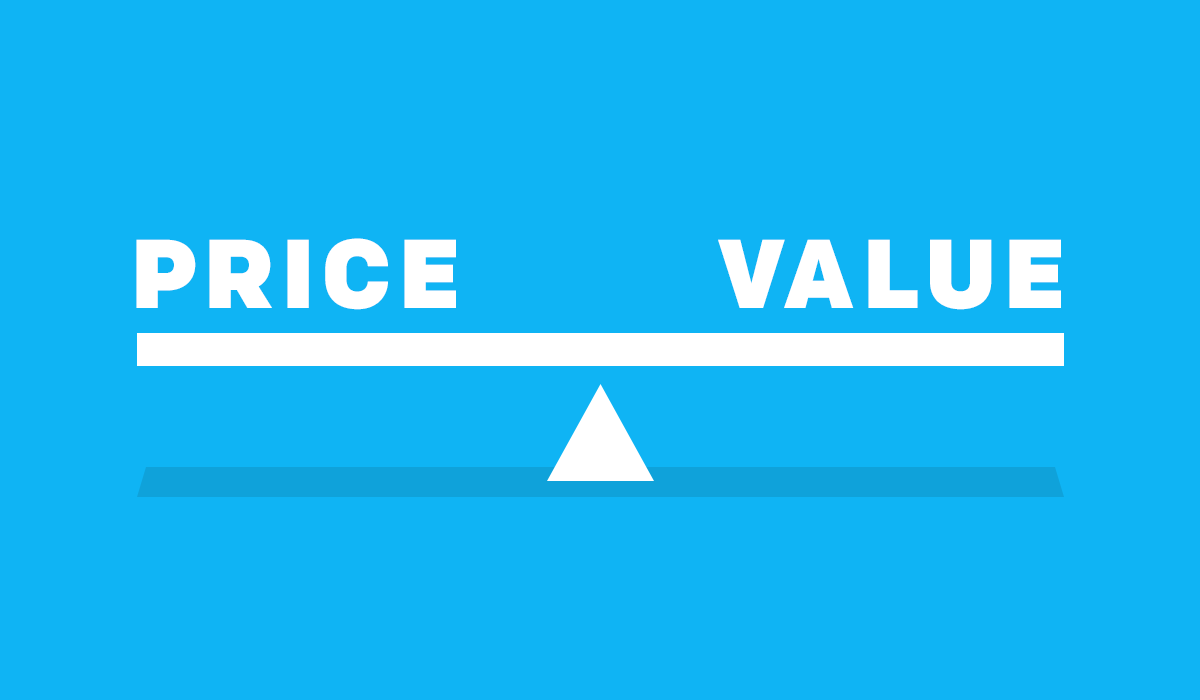I recently had a good friend of mine start a non-profit organization. This program will be life changing as they educate students in the ever-changing tech space. As he sat down to chat with me about his plan, he spoke with great passion about wanting to educate and see lives changed for the better. As we continued to talk, finances became his biggest concern for supporting his program. He mentioned that when it came to raising money, he didn’t know where to start. Would people just give him money to support the purpose? Yes, there may be a few, but we began discussing the need for an integrated sponsorship effort with his new cause. He needed to outline what his sponsorship valuation would be for his specific property, and build the program accordingly.
Determining the value of any property can be very complex. On the property side, it requires outlining specific inventory and outlining a solid valuation plan. On the marketing side, sponsorships are one of the most difficult advertising outlets for marketing professionals to evaluate. Sponsors are requiring more ROI on their sponsorship investments, so they are doing their own valuations as well. For both properties and marketers alike, there are several pricing tactics. It would be nice to have a mathematical formula you could use to get your valuation (they are out there), but really the valuation for both a property and sponsor comes down to what the overall strategy is with activating specific inventory assets based on distinctive goals and audiences.
In this article, I’ll outline how to find a specific sponsorship value for a property, just like I did for my good friend. Below are a few steps to follow.
1. Define your inventory assets. First, When creating your inventory assets for your property, there needs be some substance to what you create. Some of the questions you may want to ask yourself before creating these assets are:
- How many impressions (eyeballs) will your sponsor receive?
- What kind of exposure can you provide a sponsor that no one else can?
- Are there tangible assets that can be created within your property?
- How can the assets created, be less transactional, and more of a partnership?
- How can I integrate my sponsors more deeply into my property?
These are just a few questions you can ask before you get started. I would suggest inviting a panel of individuals from your property to get together and talk about these questions. The more people you have, the greater capacity for better ideas. Make sure to outline the assets discussed, so that you can create a complete list of your property inventory. Each asset listed is an advertising element you can sell to any sponsor with an assigned rate. Warning…this could be a very long list.
Notice I didn’t say anything about where you could put a sponsor’s logo in the questions above. Most properties focus way too much on where they can put logos, and forget that deep sponsor relationships come with fully integrated and creative partnerships (i.e. programs that unite the property and the sponsor). I’m not saying you shouldn’t put logos on signage, emails, or t-shirts, but these assets should not be the driving force behind your sponsorship efforts.
Second, after you get a list of all your assets, it is best to organize them into various categories. Example of categories are:
- Signage
- Digital
- Social Media
- Media
- Hospitality
- Naming Rights
- Community Outreach
- Many More…
When you organize your assets into categories, it helps you see where there are sponsorship opportunities.
Third, once you’ve had a chance to do this exercise internally, it doesn’t hurt to ask 5-10 potential sponsors what is important to them as it relates to your property. This is called getting “validation” of your sponsorship assets. Share with them what ideas you came up with as a property, and ask them for their ideas and what would be important to them as a sponsor. This will help immensely in figuring out what is important to those that will actually spend money with you. Here are some questions you could ask them.
- When it comes to sponsorships, what are the most important assets that would need to be part of a partnership?
- What demographics are most important to you?
- How do you measure the success of your sponsorships?
- What are your overall marketing goals when you enter into a partnership?
Like I said, these are just a few questions that can help you identify what is important to a sponsor.
2. Identify your property’s demographics. You can create some amazing assets, but if the wrong people are seeing it, then it does nothing for a sponsor. A partnership starts when a property’s demographics combined with the property’s effective assets are aligned with the sponsors target audience.
As a property, you should have access to your audience. Make sure you survey them so you can share your demographic information with your sponsors. Not only does it help your sponsor evaluate their sponsorship investment, but it also helps you identify what sponsors are the “right fit” for your property. The worst thing you can do is sign up a sponsor that is a “wrong fit” from the beginning. When you can show a sponsor specific demographic information, it helps the valuation process of your property, and it helps you secure more sponsorship revenue.
3. Develop your rate card. I once had a sales rep pitch me an asset that was astronomically priced. He was set on the value of that asset. I asked him if he had done any research with similar properties in similar markets. He looked at me with a blank stare, and couldn’t answer the question. After a long pause, he said, “Well, that’s the value cause everyone wants it.” Needless to say, I moved on. Getting the right rate for your assets is extremely important. If you don’t nail this part, then you could “sticker shock” your potential sponsor over to another opportunity. Even if it is the right audience. The numbers have to add up. Sponsors won’t spend money at your property, if you can’t prove the value through research.
When applying rates to your inventory assets, do research. If a sponsor didn’t partner with you, where else would they go? TV? Radio? Print? Look at your assets and find similar advertising rates targeting a similar demographic in the market, and pattern your assets accordingly. This can vary market-to-market. For example, the media value in New York is completely different than the media value in Salt Lake City.
Inevitably, there will be assets that do not compare to other properties. These are differentiators that can separate you from your competitors. These are key assets that you may be able to charge more for since they are exclusive opportunities. If you really vetted out the questions outlined in #1, then you’ll have quite a few of these assets. These are “gold” because there is nothing else out there like it.
The other important variable you need to consider when creating your inventory rates, is the value a sponsor receives by associating with your brand. This could include the ability to use your property’s marks and logos, category exclusivity, or the properties reputation. In my experience, you can increase the value of your sponsorship rates by roughly 10-20% based on brand association.
As you identify rates for your assets, it is important to balance maximizing revenue for the property with providing a great ROI for your sponsors. As you add up all the rates for the property, you will be able to identify the overall “potential” sponsorship value of your property. If you can feel good being 80% – 100% of this number, then you’ve more than likely found a good balance. If you don’t feel good about the number, then you need to reevaluate the overall goals of the property. Keep in mind, that you should always be thinking of additional assets every year. This keeps your property fresh, and provides new ways to increase revenue for the property.
4. Make sure you have an activation and fulfillment strategy. Sponsorship fulfillment and activation is the way by which a property helps ensure a sponsor maximizes their sponsorship investment. As a property, if you can manage the sponsorship activation and fulfillment of your sponsors effectively, then they will be loyal to you for life. You will be able to count on that sponsor each year come renewal time because they have now developed an unbreakable trust in you. You are the one they can count on because you deliver results. They don’t have to ask you all the time what is happening with their sponsorship. You are proactively reaching out and giving them updates. No sponsor likes a sales rep that only shows up when it is time to work on signing a contract.
So, what makes great sponsorship activation and fulfillment? The key is to make sure these three elements are being met.
- Communication: Make sure both property and brand understand the responsibilities each have in the activation and fulfillment process. Provide consistent and transparent communication.
- Proof of Performance: Provide visual proof of performance on all assets fulfilled. Be proactive in showing photos, videos, and audio. This builds trust.
- Reporting: Show reports that provide value back to the sponsor. Outlining added value and other important facts about the partnership that can give talking points to your contacts to take back to executive leadership.
Hopefully this provided some insights to understanding the sponsorship valuation process for your property. Feel free to share this blog with others. Visit www.sponsorcx.com/blog to read more articles about sponsorships.











